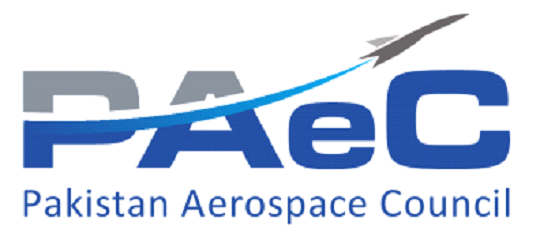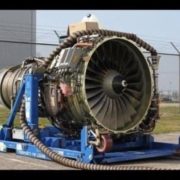New and emerging technologies have the capacity to change our lives. If they are used correctly, they can improve the way we live, work, and do business. If misused, they can create problems ranging from a small disturbance caused by automated software to a large scale security breach. Rapid developments and adoption of these technologies in the enterprise are contributing to the digital transformation that slowly started some years ago. And so, year after year industry analysts identify the technology trends that will shape and disrupt businesses in the next few years.
Industry analyst Gartner has identified the most relevant strategic technology trends that CIOs and IT executives should know about for 2020. Gartner has identified the following Strategic Technology Trends for 2020.
1. Hyper-automation

Hyper-automation requires a combination of tools. Hyper-automation is the combination of multiple Machine Learning (ML), packaged software, and automation tools to deliver work. Hyper-automation refers not only to the breadth of the pallet of tools, but also to all the steps of automation itself: Discover, analyse, design, automate, measure, monitor, and reassess. CIOs must understand the range of automation mechanisms, how they relate to one another, and how they can be combined and coordinated to get a full picture of what the major focus for hyper-automation is.
2. Multi-experience

A combined shift in both perception and interaction models leads to the future multi-sensory and multi-modal experience. Through 2028, the user experience will undergo a significant shift in how users perceive the digital world as well as how they interact with it. Conversational platforms are changing the way in which people interact with the digital world. Virtual Reality (VR), Augmented Reality (AR), and Mixed Reality (MR) are changing the way in which people perceive the digital world. This combined shift in both perception and interaction models leads to the future multisensory and multimodal experience, something we will see more often starting in 2020 across many industries. According to Brian Burke, Research Vice President at Gartner, the model will shift from one of technology-literate people to one of people-literate technology. The burden of translating intent will move from the user to the computer. “This ability to communicate with users across many human senses will provide a richer environment for delivering nuanced information,”
3. Democratization of Expertise

Democratization is focused on providing people with access to technical expertise. Democratization is focused on providing people with access to technical expertise such as Machine Learning or application development, or business domain expertise such as sales process or economic analysis via a radically simplified experience and without requiring extensive and costly training. Citizen access such as citizen data scientists and citizen integrators as well as the evolution of citizen development and no-code models are good examples of democratization. Throughout 2023, four key aspects of the democratization trend to accelerate, including:
- Democratization of data and analytics tools: Those targeting data scientists expanding to target the professional developer community
- Democratization of development: Such as AI tools to leverage in custom-developed applications
- Democratization of design: For expanding on the low-code, no-code phenomena with automation of additional application development functions to empower the citizen-developer
Democratization of knowledge: Such as non-IT professionals gaining access to tools and expert systems that empower them to exploit and apply specialized skills beyond their own expertise and training.
4. Human Augmentation

Bio-hackers and body-hackers on the rise. With a new consumerization effect, employees seek to extend their personal enhancements to improve their office environment. Human augmentation is a much wider topic than what many people think. It explores how technology can be used to deliver cognitive and physical improvements as an integral part of the human experience. Human augmentation enhances humans in two main ways: Physical or Cognitive. It can be physical, by changing their inherent physical capabilities by implanting or hosting a technology element on their bodies, such as a wearable device. But also, cognitive augmentation can occur through accessing information and exploiting applications on traditional computer systems and the emerging multi-experience interface in smart spaces. Over the next 10 years, increasing levels of physical and cognitive human augmentation will become more prevalent as individuals seek personal enhancements raising the number of bio-hackers and body-hackers globally. This will create a new consumerization effect, where employees seek to exploit their personal enhancements — and even extend them — to improve their office environment as a whole.
5. Transparency and Tractability

Transparency and tractability are critical elements to support digital ethics and privacy needs. Consumers who are increasingly aware that their personal information is valuable, are demanding control. Analysts report how organizations recognize the increasing risk of securing and managing personal data, and governments are implementing strict legislation to ensure they do. Both transparency and tractability are critical elements to support these digital ethics and privacy needs. Transparency and tractability refer to a range of attitudes, actions, and supporting technologies and practices designed to address regulatory requirements, preserve an ethical approach to use Artificial Intelligence (AI) and other advanced technologies, and repair the growing lack of trust in companies. The organizations must focus on three areas:
- Artificial Intelligence and Machine Learning
- Personal data privacy, ownership, and control
- Ethically aligned design
6. The Empowered Edge

Edge Computing was born from the need for IoT systems to deliver disconnected or distributed capabilities into the embedded IoT word for specific industries such as manufacturing and retail. Edge Computing is a computing topology in which information processing, content collection, and delivery are placed closer to the sources, repositories, and consumers of this information. Edge Computing tries to keep the traffic and processing local to reduce latency, exploit the capabilities of the edge and enable greater autonomy at the edge. M uch of the current focus on edge computing comes from the need for IoT systems to deliver disconnected or distributed capabilities into the embedded IoT world for specific industries such as manufacturing or retail. However, edge computing will become a dominant factor across virtually all industries and use cases as the edge is empowered with increasingly more sophisticated and specialized compute resources and more data storage. Complex edge devices, including robots, drones, autonomous vehicles, and operational systems will accelerate this shift.
7. Distributed Cloud

The distributed cloud leads a new era in cloud computing. The cloud expands its territory and becomes a distributed cloud, which is the distribution of public cloud services to different locations while the originating public cloud provider assumes responsibility for the operation, governance, updates to and evolution of the services. This represents a significant shift from the centralized model of most public cloud services and will lead to a new era in cloud computing.
8. Autonomous Things

With the improvement in regulation and social acceptance, autonomous things will increasingly be deployed in uncontrolled public spaces. Autonomous things, as physical devices that use Artificial Intelligence (AI) to automate functions previously performed by humans. The most recognizable current forms of autonomous things are robots, drones, autonomous vehicles/ships, and appliances. The automation of these things goes beyond the automation provided by rigid programming models, and they exploit AI to deliver advanced behaviors that interact more naturally with their surroundings and with people.
As the technology capability improves, regulation permits, and also social acceptance grows, autonomous things will increasingly be deployed in uncontrolled public spaces. As autonomous things proliferate, there is an expected shift from stand-alone intelligent things to a swarm of collaborative intelligent things where multiple devices will work together, either independently from people or with human input. For example, heterogeneous robots can operate in a coordinated assembly process. In the delivery market, the most effective solution may be to use an autonomous vehicle to move packages to the target area. Robots and drones aboard the vehicle could then affect the final delivery of the package.
9. Practical Block-chain

CIOs need to start evaluating block-chain, even if they don’t anticipate aggressive adoption of the technology in the near term. Block-chain has the potential to reshape industries by enabling trust, providing transparency, and enabling value exchange across business ecosystems, potentially lowering costs, reducing transaction settlement times, and improving cash flow. CIOs will see that assets can be traced to their origin, significantly reducing the opportunities for substitutions with counterfeit goods. This will contribute to a more transparent supply chain. Asset tracking also has value in other areas, such as tracing food across a supply chain to more easily identify the origin of contamination, or track individual parts to assist in product recalls. Another area in which block-chain has potential is Identity Management. Smart contracts can be programmed into the block-chain where events can trigger actions; for example, payment is released when goods are received. The significant potential for disruption and revenue generation means organizations should begin evaluating block-chain, even if they don’t anticipate aggressive adoption of the technologies in the near term.
10. AI Security

Although AI and ML create great opportunities to enable hyper-automation and leverage autonomous things to deliver business transformation, it creates significant new challenges for the CISO, the security team, and risk leaders. A rather obvious trend for 2020 sees Artificial Intelligence and Machine Learning continuing to be applied in order to augment human decision making across a broad set of use cases. While this creates great opportunities to enable hyper-automation and leverage autonomous things to deliver business transformation, it also creates significant new challenges for the CISO, the security team, and risk leaders with a massive increase in potential points of attack with IoT, cloud computing, micro-services, and highly connected systems in smart spaces. Therefore, analysts advise that Security and Risk leaders should focus on the following three key areas:
- Protecting AI-powered systems
- Leveraging AI to enhance security defense
- Anticipating nefarious use of AI by attackers
As far as we can see, the new year anticipates great opportunities as well as great challenges for CIOs and their teams. Yet, it is paramount to always remember that embracing change and adopting new technologies and trends will guarantee that your enterprise remains active and competitive on the market. Resisting change will only set your company a few but important steps behind. Leaders in enterprise digital transformation will continue to evolve with those who are brave enough to jump into what the future will bring.
Source





















